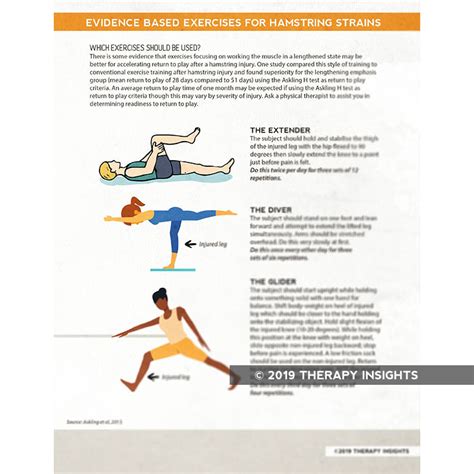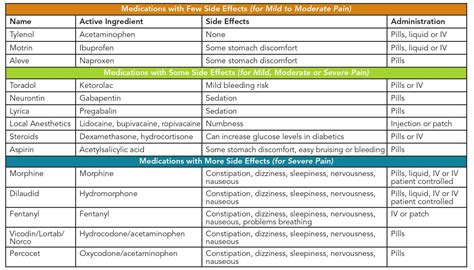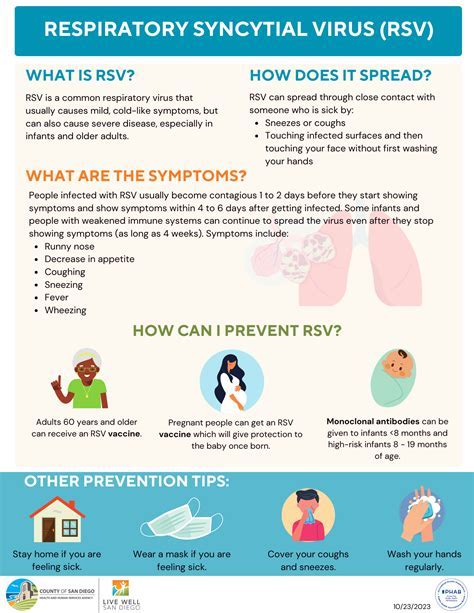Intro
Effectively treat hamstring strain with targeted exercises, stretches, and physiotherapy, reducing muscle soreness, inflammation, and recovery time, to prevent re-injury and promote overall leg health and athletic performance.
Hamstring strains are a common injury that can occur to anyone, regardless of their age or activity level. However, they are more prevalent among athletes who participate in sports that involve running, jumping, or sudden stops and starts, such as soccer, football, and basketball. A hamstring strain can be a debilitating injury that can keep you sidelined for weeks or even months, which is why it's essential to treat it effectively and take preventive measures to reduce the risk of recurrence.
The hamstring muscles, which include the biceps femoris, semitendinosus, and semimembranosus, are located at the back of the thigh and play a crucial role in knee flexion and hip extension. When these muscles are stretched or torn, it can cause pain, swelling, and limited mobility. In severe cases, a hamstring strain can lead to chronic pain and decreased athletic performance. Therefore, it's crucial to seek medical attention if you suspect you have a hamstring strain, and to follow a comprehensive treatment plan to ensure proper healing and prevent further complications.
Hamstring strains can be caused by a variety of factors, including overuse, poor flexibility, and inadequate warm-up or cool-down routines. They can also be caused by direct trauma to the muscle, such as a blow to the back of the thigh. In some cases, a hamstring strain can be a recurring injury, which can be frustrating and challenging to treat. However, with the right treatment approach and preventive measures, it's possible to effectively manage hamstring strains and reduce the risk of recurrence.
Treatment Options for Hamstring Strains

Rest, Ice, Compression, and Elevation (RICE)
The RICE principle is a widely accepted treatment approach for hamstring strains. Rest involves avoiding activities that aggravate the injury, while ice helps to reduce pain and inflammation. Compression, such as using an elastic bandage, can help to reduce swelling, and elevation involves elevating the affected leg above the level of the heart to reduce swelling.Physical Therapy and Rehabilitation Exercises

Stretching Exercises
Stretching exercises are essential for improving flexibility and reducing the risk of recurrence. Examples of stretching exercises for the hamstring muscles include: * Standing hamstring stretch: Stand with your feet shoulder-width apart and lean forward at the hips, keeping your knees straight. * Seated hamstring stretch: Sit on the floor with your legs straight out in front of you and lean forward, reaching for your toes. * Lying hamstring stretch: Lie on your back with your legs straight up in the air and lean forward, reaching for your toes.Medication and Pain Management

Pain Management Strategies
In addition to medication, there are several pain management strategies that can help to reduce pain and discomfort. These include: * Applying heat or cold packs to the affected area * Using a foam roller or massage ball to release tension in the muscle * Practicing relaxation techniques, such as deep breathing or meditationPreventive Measures

Strengthening Exercises
Strengthening exercises can help to improve muscle strength and reduce the risk of injury. Examples of strengthening exercises for the hamstring muscles include: * Deadlifts: Stand with your feet shoulder-width apart and lift a weight or barbell up off the ground, keeping your back straight and your core engaged. * Leg curls: Sit on a leg curl machine and lift the weight up off the ground, keeping your legs straight. * Glute bridges: Lie on your back with your knees bent and feet flat on the ground, then lift your hips up off the ground, squeezing your glutes and pushing your heels towards the ceiling.Conclusion and Final Thoughts

What are the symptoms of a hamstring strain?
+The symptoms of a hamstring strain may include pain, swelling, and limited mobility in the affected leg. In severe cases, a hamstring strain can cause bruising, muscle spasms, and decreased athletic performance.
How long does it take to recover from a hamstring strain?
+The recovery time for a hamstring strain can vary depending on the severity of the injury. Mild hamstring strains may take several weeks to recover from, while more severe strains can take several months to heal.
Can I prevent hamstring strains from occurring?
+Yes, there are several ways to prevent hamstring strains from occurring, including warming up and cooling down properly, incorporating stretching and strengthening exercises into your workout routine, and avoiding overuse. It's also essential to wear proper footwear and use equipment that is designed to reduce the risk of injury.
